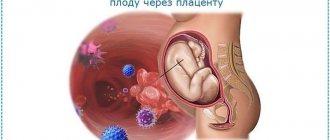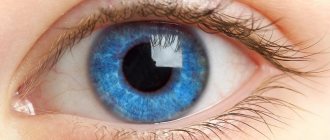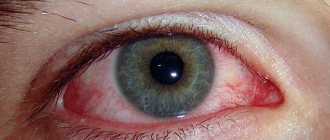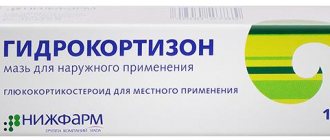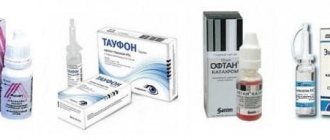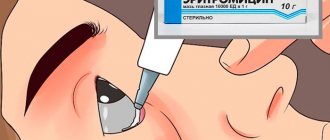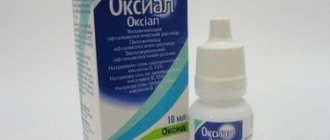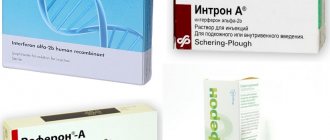Release form and composition of the drug
Levomycetin ointment is sold in tubes of different volumes: from 5 to 40 mg. Liniment is usually white in color, but a yellowish or greenish tint is also considered normal. The structure of the ointment should be uniform, without particles and impurities. Levomycetin has a specific medicinal odor that distinguishes it from its analogues.
The main component of the ointment is the antibacterial substance of the same name, designed to combat a wide range of infectious pathogens. Levomycetin has another official name - chloramphenicol. This is an old-generation antibiotic, which has been used for more than 70 years not only in medicine, but also in veterinary medicine and animal husbandry.
Levomycetin in its pure form is colorless and very bitter-tasting crystals. The substance is poorly soluble in water, so ethanol, pyridine, ethylene glycol or propylene glycol are used for dilution. It is the last of these alcohols that is found in the composition of chloramphenicol ointment.
The liniment also contains:
- methyluracil – a substance that accelerates regeneration processes;
- polyethylene oxide;
- petrolatum;
- cetostearyl alcohol.
Levomycetin ointment for eyes is available in 1% concentration. Formulations with a higher content of antibacterial component are not used for the treatment of ophthalmic diseases due to the high toxicity of chloramphenicol.
Pharmacological properties
Levomycetin is not used in high dosages, since the substance often provokes severe adverse reactions in the body. Chloramphenicol penetrates the pathogenic cell, thereby interfering with bacterial protein synthesis. Subsequently, the pathogenic microorganism loses its ability to reproduce and dies.
Levomycetin is effective against bacterial infections caused by:
- spirochetes;
- chlamydia;
- rickettsia.
Doctors often resort to the use of this drug in the presence of an infection that is resistant to penicillin and tetracycline antibiotics, streptomycins, and sulmamides.
Chloramphenicol is not prescribed for diseases caused by protozoan microorganisms (Giardia, Proteus, Pseudomonas aeruginosa). Also, chloramphenicol ointment is ineffective against acid-fast pathogens.
Levomycetin (gel)
Name: Levomycetin (gel) (Laevomycetinum) Pharmacological action: Levomycetin is a broad-spectrum antibiotic with a pronounced bacteriostatic effect. The drug is effective for diseases caused by strains of gram-positive and gram-negative microorganisms, including staphylococcal and streptococcal infections. Strains of Proteus, Pseudomonas aeruginosa, and clostridia are sensitive to the action of the drug, including strains resistant to penicillin and other antimicrobial drugs. Bacterial resistance to chloramphenicol develops slowly. The mechanism of action of chloramphenicol is based on its ability to inhibit protein synthesis in microbial cells. The drug in the form of a gel has a special base, thanks to which the drug has an anti-inflammatory effect and improves the outflow of exudate. The pharmacokinetics of the drug has not been studied.
Indications for use: The drug is used for the treatment of patients with the first phase of the wound process, including infected burns, bedsores, trophic ulcers and purulent wounds. The drug is also prescribed to patients suffering from pyoderma, acne and microbial eczema.
Directions for use: The drug is intended for external use. The drug is applied after preliminary treatment of the wound surface. The gel should be applied in a thin layer without rubbing, after which a sterile bandage should be applied on top. It is also possible to apply the gel to a bandage, which is then used to cover the treated wound surface. The duration of the course of treatment is determined by the attending physician individually for each patient. For wounds, the gel is usually prescribed to be applied once a day. For burns, the gel is usually prescribed to be applied once every 1-3 days. For skin infections, the gel is usually prescribed to be applied 1-2 times a day. In this case, the gel is applied without a bandage. You can cover the wound, for example with clothing, only after the gel is completely absorbed.
If there are wet surfaces, the wound surface should be blotted with a gauze cloth. The dose of the gel is determined depending on the area of the wound surface. The maximum single dose is 75 g of gel. The maximum daily dose is 200 g of gel. The maximum recommended duration of treatment is 2 weeks. If necessary, the use of the gel is combined with the use of systemic antimicrobial drugs.
Side effects: The drug is usually well tolerated by patients. In isolated cases, burning and pain may develop at the site of application of the drug; they usually go away on their own, but some patients require pre-treatment of the damaged area of skin with an anesthetic. If severe burning or pain develops, the drug should be washed off with warm boiled water. Patients with increased individual sensitivity to chloramphenicol may develop skin itching, rash, urticaria, skin peeling and other skin reactions of allergic etiology. If hypersensitivity reactions develop, the drug is discontinued.
Contraindications: Increased individual sensitivity to the components of the drug. The drug is not prescribed to patients with the second phase of the wound process, as well as to patients with a history of blood dyscrasias. The drug is not used for the treatment of women in the third trimester of pregnancy, as well as for the treatment of children under the age of 9 months.
Pregnancy: The drug is contraindicated in women in the third trimester of pregnancy. In the first and second trimesters of pregnancy, the drug can be prescribed by the attending physician if the expected benefit to the mother is higher than the potential risks to the fetus. If it is necessary to use the drug during lactation, it is recommended to consult with your doctor and decide whether to interrupt breastfeeding.
Interaction with other drugs: The drug should not be used on the same area of skin simultaneously with other topical drugs. The combined use of oral or parenteral antimicrobial drugs enhances the effect of Levomycetin Gel.
Overdose: At the moment, there have been no reports of drug overdose.
Release form: Gel, 20 or 30 g in aluminum tubes, 1 aluminum tube in a cardboard package.
Storage conditions: It is recommended to store the drug in a dry place away from direct sunlight at a temperature of 15 to 25 degrees Celsius. Shelf life – 2 years.
Composition: 100g of gel contains: Chloramphenicol (chloramphenicol) – 1.0g; Excipients.
Attention! The description of the drug “ Levomycetin (gel) ” on this page is a simplified and expanded version of the official instructions for use. Before purchasing or using the drug, you should consult your doctor and read the instructions approved by the manufacturer. Information about the drug is provided for informational purposes only and should not be used as a guide to self-medication. Only a doctor can decide to prescribe the drug, as well as determine the dose and methods of its use.
Pharmacodynamics and pharmacokinetics
The active component of the eye ointment penetrates deep into the mucous membranes through the cell membrane and immediately blocks the vital processes of harmful bacteria. Unlike most analogues, Levomycetin not only kills the infection, but also, thanks to methyluracil, promotes the regeneration of affected tissues and the synthesis of proteins in bacteria.
The absorption properties of this antibacterial drug are minimal, since it only partially penetrates the blood and lymph. A day after applying the ointment, the remnants of chloramphenicol completely leave the body in the urine.
Indications for use
Due to the high risk of side effects, chloramphenicol-based ointment is prescribed much less frequently today than 20-30 years ago. Levomycetin liniment is often used as part of complex therapy for the treatment of eye diseases.
Antibiotic ointment is recommended for:
- blepharitis;
- conjunctivitis;
- keratoconjunctivitis;
- trachoma;
- barley (hordeolum);
- keratitis.
The drug can be used for the simultaneous occurrence of two or more ophthalmological pathologies, as well as for secondary infection of the ocular mucosa, complicated by neuroparalytic keratitis. According to the instructions for use of chloramphenicol ointment, it can also be used as a dermatological agent.
A local antibiotic is suitable for the treatment of any skin diseases that occur with the formation of:
- ulcers;
- boils;
- abscesses;
- phlegmon.
As a prophylactic agent, chloramphenicol can be used in the presence of abrasions, scratches, open wounds with a risk of infection, and burns.
Levomycetin ointment: detailed instructions for use, what it helps with, analogues and reviews
The drug has a wide list of contraindications. If it is used inappropriately or incorrectly, there is a risk of local and systemic side effects. To avoid the development of an allergic reaction, you should coordinate the use of Levomycetin ointment with your doctor.
Description of the drug
Levomycetin is produced in the form of a transparent jelly-like gel and white thick liniment with a specific antibiotic odor.
All dosage forms have a pronounced bactericidal effect, suppress inflammatory processes, and eliminate swelling. After absorption of the active ingredient into pathological lesions, the antibacterial effect quickly appears.
And the course use of antimicrobial agents stimulates the restoration of tissues affected by pathology. What does Levomycetin ointment help with:
- skin diseases caused by active growth and reproduction of pathogenic microorganisms;
- skin inflammatory pathologies complicated by secondary bacterial infection;
Levomycetin ointment is an effective remedy for the treatment and prevention of infectious skin lesions. It is included in therapeutic regimens for both acute and chronic, indolent pathologies.
The use of an antibacterial agent can reduce the pharmacological load on the patient’s body. This occurs by reducing the doses of systemic antibiotics or completely eliminating them.
Clinical and pharmacological group
Levomycetin ointment is a representative of the clinical and pharmacological group of drugs with a bactericidal effect. It refers to products for external use used in the treatment of infectious and inflammatory skin pathologies.
pharmachologic effect
The medicinal properties of ointment with the antibiotic chloramphenicol are due to its pharmacological action.
This is a chemical compound of synthetic origin, identical to the substance produced by Streptomyces venezuelae.
After penetration into pathological lesions, chloramphenicol disrupts the biosynthesis of proteins necessary for the construction of bacterial membranes. They become fragile, lose their integrity and gradually collapse.
The antibiotic also prevents the polymerization of amino acid residues necessary for RNA replication. Under such conditions, pathogenic microorganisms are unable to reproduce and therefore die quickly. Course use of Levomycetin ointment has a diverse effect on the course of infectious processes:
eliminates the cause of pathology, destroying almost all gram-positive and gram-negative bacteria, some types of protozoa;- relieves acute and chronic inflammation;
- normalizes microcirculation, stimulates the resorption of inflammatory edema;
- reduces the severity of the symptoms of the pathology - pain, redness and irritation of the skin.
As a result of the destruction of bacteria, blood circulation in damaged tissues improves and metabolism accelerates. Regeneration processes occur much faster, which reduces the duration of treatment.
Release form and composition
Levomycetin gel and liniment (cream) are produced by domestic pharmaceutical factories. The external product is packaged in sealed aluminum tubes of 20 or 25 g.
The secondary packaging of the drug is a cardboard box, which also contains instructions for use. In pharmacies you can buy Levomycetin ointment containing 1% or 5% of the active ingredient.
The active ingredient of the drug is the antibiotic chloramphenicol (chloramphenicol). The auxiliary composition is represented by the following chemical compounds:
- macrogol;
- Vaseline oil;
- cetostearyl alcohol;
- purified water;
- propylene glycol.
Contraindications
Due to its toxicity, this antibacterial agent has strict contraindications for use:
- individual intolerance to chloramphenicol or other substances in the ointment;
- psoriasis;
- eczema;
- mycotic lesions of the skin and mucous membranes;
- liver dysfunction;
- renal failure;
- porphyria;
- oncological disease.
The manufacturer does not set restrictions on the use of liniment for pregnant and lactating women, children and elderly patients. At the same time, the decision on the need to use chloramphenicol ointment in a given case should be made exclusively by the attending physician, who objectively assesses the potential risks and benefits for the patient.
Levomycetin ointment - instructions for use. To fight bacterial infection
Diseases of the skin and mucous membranes associated with infectious lesions require complex treatment .
At the same time, the first on the list of drugs are antimicrobial agents for internal and external use.
Levomycetin ointment is a local drug to combat bacterial infection , which has been successfully used in ophthalmological and dermatological practice.
The active medicinal base of the ointment is the antibiotic chloramphenicol, or chloramphenicol .
This substance was discovered in 1949, and was first released as a medicine under the trade name Chloromycetin.
The product is included in the list of vital drugs.
Composition and release form
Levomycetin ointment (liniment) is available in aluminum tubes of 5, 25 and 40 g in concentration options - 1%, 2.5% and 5%.
You can find the medicine under different trade names (Sintomycin, Levomycetin-Acri and others).
In addition to chloramphenicol, the original ointment contains :
- methyluracil;
- polyethylene oxide;
- propylene glycol;
- cetostearyl alcohol;
- Vaseline oil.
What is it used for: indications and use
Successfully used for skin and eye diseases of infectious etiology.
For eye diseases
Indications for the use of chloramphenicol ointment in ophthalmology:
- blepharitis;
- keratitis;
- conjunctivitis;
- trachoma.
The drug is also used for combined eye diseases - blepharoconjunctivitis, keratoconjunctivitis, and neuroparalytic keratitis complicated by a bacterial infection. Barley can also be treated with ointment.
According to the instructions for use for blepharitis and inflammation of the conjunctiva of chloramphenicol ointment 1% is placed behind it .
After this, you need to close your eyes and move them from side to side several times so that the medicine is distributed throughout the mucous membrane.
Don't open your eyes for at least 5 minutes. The manipulation is repeated every 3-4 hours.
For trachoma and keratitis, in addition to the usual lubrication of the eyelids, ointment bandages are used on the eyes .
Squeeze 1-2 cm of ointment onto multi-layer gauze or bandage and apply it so that the bandage does not move. The doctor may recommend the same method for conjunctivitis.
To treat stye, 3-5 times a day, lubricate the eyelid with 1% ointment or apply a bandage for half an hour.
For other diseases
In addition to eye pathologies, chloramphenicol in ointment form is indicated for :
- carbuncles and boils;
- trophic ulcers and long-healing wounds;
- bacterial eczema ;
- necrosis and suppuration of the skin;
- bedsores;
- dermatoses;
- hard-to-heal cracked nipples ;
- chemical and thermal burns ;
- wounds with the addition of a microbial infection;
- infectious inflammation of the nail and periungual area (felon, paronychia).
For the treatment of acne, chloramphenicol is ineffective in most cases, since the propionobacteria that cause this disease are insensitive to chloramphenicol.
For deep injuries, the wound is loosely filled with a gauze pad soaked in chloramphenicol. The dressings are changed every day or twice a day until the pus is completely cleared or the symptoms of inflammation are eliminated.
Use for children
The method of using chloramphenicol liniment for the treatment of eye and skin diseases in children is similar to that in adults.
The only difference is that the amount of ointment is reduced depending on the age of the child .
The exact dosage is determined by the doctor.
Levomycetin ointment is not prescribed to newborns (up to 4 weeks), and in early childhood (up to 3 years) it is used with extreme caution.
Side effects
The ointment, unlike tablets and other forms of chloramphenicol for internal use, is well tolerated and does not have a systemic effect on the body .
Side effects may include an allergic reaction in the form of a rash or dermatitis .
In this case, the drug is discontinued and antihistamines (Tavegil, Suprastin, Diazolin or others) are prescribed.
Also, against the background of topical use of chloramphenicol, a skin fungal infection may occur .
When treating eye pathologies with chloramphenicol, cases of bone marrow hypoplasia were noted , so the use of the drug requires regular monitoring of the condition of peripheral blood.
Overdose
If the dosage is exceeded, chloramphenicol ointment can reduce visual acuity and even lead to its loss .
Therefore, follow the instructions for use and do not increase the amount of product applied to the eye mucosa.
Another sign of an overdose may be an allergy in the form of a skin rash .
In this case, do not continue treatment with the ointment - rinse your eyes thoroughly or remove any remaining product from the skin with a cotton pad soaked in warm water, take an antihistamine and immediately consult your doctor.
Conditions and shelf life
Levomycetin ointment should be stored at a temperature not exceeding 25°C without direct sunlight.
To do this, you can choose a dark, cool place, such as a locked closet in a well-ventilated room. Shelf life – 3 years .
Analogs
There are different drugs with similar effects. In addition to chloramphenicol, their composition may include other components:
- Colbiocin is an eye ointment with additional tetracycline and sodium colistimethate. The antibacterial spectrum of action is wide; the drug is indicated for the same eye diseases as chloramphenicol, as well as for septic corneal ulcers and dacryocystitis.
- Levosin - contains methyluracil, trimecaine, sulfadimethoxine. Has antimicrobial, analgesic, anti-inflammatory effects. Prescribed for acute purulent wounds.
- Sintomycin - contains castor oil, carboxymethylcellulose, sorbic acid. The effect, side effects and contraindications are the same as for chloramphenicol.
- Levomekol . The ointment is the closest in composition to chloramphenicol, its active components are chloramphenicol and methyluracil. Indicated for purulent wounds of the skin. A similar remedy is levomethyl.
Prices in Russia
Ointments with chloramphenicol are represented mostly by analogues , the average prices for which are given below:
- Levosi 40 g – 90 rubles ;
- Levomekol ointment 40 g – 120-130 rubles ;
- Synthomycin liniment 25 g – 70-90 rubles ;
- Colbiocin eye ointment 5 g – 400 rubles ;
- Levomethyl 40 g – 60 rub .
Instructions for use, dosage for children and adults
The doctor should familiarize the patient in detail with the treatment regimen for eye diseases with chloramphenicol-based liniment. To obtain more detailed information about this drug and the nuances of its use, you should independently study the instructions.
Levomycetin (Levomekol) eye ointment
In the treatment of ophthalmological diseases, 2 methods of using chloramphenicol ointment are used:
- laying behind the eyelid;
- applying bandages.
The first method is considered more effective, but it is not suitable for children. To obtain a lasting therapeutic effect and prevent recurrence of the eye infection, it is important to use the ointment for the full course, and not stop treatment after the first improvements.
The need for long-term use of Levomycetin (at least 10-14 days), according to experts and patients, is one of the main disadvantages of this drug and old-generation antibiotics in general. Modern analogues act faster and are also less toxic.
If a specialist prescribes eye drops along with the ointment, then an interval of 15-20 minutes must be maintained between the use of topical medications. In this case, the eyes are first instilled with liquid solutions, and only then formulations of a thicker consistency are applied.
Levomycetin ointment must be applied at least 2 times a day. For mild cases of illness, a single use may be sufficient, but for severe cases, it is recommended to perform up to 4-5 procedures per day. For the treatment of adult patients, liniment is placed under the lower eyelid.
It is important to adhere to the following algorithm:
- Wash your hands thoroughly.
- Warm the tube with ointment in your hands until its temperature approaches body temperature.
- The lower eyelid should be slightly pulled down and a small amount of the drug should be placed under it as a strip. During the procedure, it is advisable for the patient to look up.
- In order for the antibacterial component to be distributed over the entire surface of the mucous membrane, you need to close your eyes and, without opening your eyelids, make circular movements with your eyeballs for several seconds.
- After applying the ointment, it is important not to open your eyes for 3-5 minutes.
If there is intense discharge of purulent contents, before the medical procedure it is necessary to rinse the eyes with a pale pink manganese solution. This remedy is considered the simplest effective antiseptic.
Patients who use contact lenses must clear their eyes of foreign bodies before using the ointment. It will be possible to install the products back after 30-45 minutes. after an antibacterial procedure.
To treat eye diseases, the ointment is applied in a thin layer. If Levomycetin is used for dermatological problems, liniment is used in large quantities. The ointment should dry a little, after which a gauze bandage is applied to it and left for 30-40 minutes. for therapeutic effects.
For barley
Levomycetin with a minimal concentration of antibiotic is also used to treat barley, the scientific name of which is “hordeolum”. The affected area on the lower eyelid is lubricated with 1% ointment. If we are talking about internal barley, liniment is placed behind the lower eyelid. For children to treat hordeolum, it is better to apply external dressings with Levomycetin. Keratitis or trachoma is treated in a similar way.
To achieve the expected result with an eye patch, you must:
- Use only a sterile bandage (gauze), folded in 4-8 layers.
- To treat one eye, an extruded strip of liniment 1-2 cm long is sufficient.
- The bandage must be applied to the eye and fixed for 15-20 minutes.
For conjunctivitis
In case of inflammation of the eyelid or conjunctiva, placing ointment behind the eyelid will help improve the condition of the eye. In acute cases of the disease, it is recommended to repeat the manipulation every 4-5 hours. Before each procedure, both eyes must be treated with a disinfecting solution.
Levomycetin - instructions for use for children and adults. A drug
Levomycetin is presented in the form of tablets, liniment, eye drops and alcohol solution. Their composition:
| Eye drops | Pills | Solution | Liniment | |
| Description | Clear liquid | White round tablets | Clear liquid | Homogeneous ointment |
| Chloramphenicol concentration, mg | 2.5 per 1 ml | 250 or 500 per 1 piece. (extended release – 650 mg) | 0.25, 1, 3 or 5% | 1 or 5% |
| Auxiliary components | Water, boric acid | Calcium stearate, potato starch, polyvinylpyrrolidone | Ethanol | Vaseline oil, methyluracil, cetostearyl alcohol, polyethylene oxide, propylene glycol |
Instructions for use of Levomycetin tablets, dosage
The tablets are taken orally as a whole, regardless of food (in case of nausea and vomiting - 1 hour after eating), washed down with clean water.
The standard dosage for adults, according to the instructions for use, is from 1 to 2 tablets of Levomycetin 250 mg 3-4 times a day. The daily dose is 2 g. In especially severe cases (typhoid fever, etc.), Levomycetin is prescribed in a dose of up to 4 grams per day (maximum daily dose for adults) under strict monitoring of hemogram parameters and liver and kidney function. The daily dose is divided into 3-4 doses.
For children, Levomycetin is prescribed in dosages, depending on age, 3 - 4 times a day. Single doses according to instructions:
- for children aged 3–8 years - 0.125 g,
- over 8 years old - 0.25 g.
The duration of treatment is 7-10 days, and in some cases, if the drug is well tolerated and there are no side effects, up to 2 weeks.
Treatment should be carried out only as prescribed and under the supervision of a physician. Uncontrolled prescription of Levomycetin and its use in mild forms of infectious diseases is unacceptable, especially in pediatric practice.
Prices and conditions for dispensing from pharmacies
Antibacterial agents can be purchased in pharmacies without a doctor's prescription. The average cost of the drug is 80 rubles.
Pharmacological properties and pharmacokinetics
Levomycetin is a chemically synthesized antibiotic. It is an analogue of natural chloramphenicol, which was originally discovered in the isolation products of bacteria of the genus Streptomycetes.
Able to interrupt microbial protein synthesis, thereby stopping the proliferation of pathogens. It acts on a wide range of microorganisms: Escherichia coli and Hemophilus influenzae, the causative agent of dysentery, meningitis, salmonellosis, typhoid fever, gonorrhea, leptospirosis. Cures purulent infections. Effective against rickettsia, chlamydia, neisseria, spirochetes and some large viruses.
on Attuale.ru: Polyoxidonium injections: instructions for use for adults and children, composition, dosage, analogues
Stops the growth of strains resistant to penicillin, sulfanilamide and streptomycin. It is destroyed at pH>10, therefore it has no effect on bacteria that are resistant to an acidic environment: Mycobacterium tuberculosis, Pseudomonas aeruginosa, clostridia, protozoa and fungi.
Pathogens rarely adapt to the antibiotic itself, and therefore resistance to it develops slowly.
When using the product in tablet form, 80% of the substance is absorbed from the prescribed dose, half of which forms strong bonds with blood proteins. Peak plasma concentrations of chloramphenicol are detected no later than three hours after administration of the drug.
The medicine easily overcomes physiological barriers. From the mother's blood, from a third to 80% of the compound enters the fetal bloodstream. In nursing women, the compound is found in milk. A third of the chemical enters the bile. The main part penetrates the kidneys and liver. It enters the spinal substance, as well as other tissues and fluids of the body.
When installed in the eye, the drug is well absorbed into the tissue. Droplets accumulate in the vitreous body, iris, aqueous humor and cornea. Part of the medicine enters the bloodstream and is disposed of in the urine.
The dynamics of the behavior of the solution when applied to the skin has not been studied.
Properties of Levomycetin
Bacterial resistance to chloramphenicol develops extremely slowly. The active substance of the drug blocks the polymerization of activated amino acid residues associated with m-RNA.
When applied topically, the product reaches the required concentration in the secretions of the eyes, vitreous fibers, iris and cornea, and does not penetrate the lens.
The drug passes through the placenta barrier and is found in breast milk.
After oral administration, the drug is rapidly absorbed, has 80% bioavailability, and binds to plasma proteins by 55%. Metabolism of the drug occurs in the liver and intestines, the half-life is 1.5-3.5 hours, and is excreted in urine, feces and bile.
The therapeutic concentration of chloramphenicol in the blood remains for 4–5 hours after administration, and up to a third of the taken dose penetrates into the bile. The highest concentration of Levomycetin is found in the kidneys and liver. The drug is poorly susceptible to hemodialysis.
Levomycetin - an antibiotic or not?
The active substance in the Levomycetin composition is an antibiotic; its action is associated with a violation of the protein synthesis of gram-positive and gram-negative bacteria. The drug shows activity against staphylococci, streptococci, E. coli, salmonella, Shigella, Klebsiella, Proteus, spirochetes, and some large viruses.
The medication kills microflora that are resistant to streptomycins, penicillins and sulfonamides. The antibiotic Levomycetin relieves inflammation and treats infections of any tissues and organs, provided the microflora is sensitive. The drug belongs to antibacterial agents of synthetic origin, identical to the product that streptomyces microbes produce during their life processes.
Solution, drops, tablets "Levomycetin": what does the medicine help with?
Indications for the use of alcohol solution and liniment are:
- trophic ulcers;
- wounds;
- cracked nipples;
- boils;
- purulent otitis (the auricle is treated with Levomycetin solution);
- bedsores;
- infectious skin lesions of a bacterial nature.
Source: https://probol.info/otravleniya/levomitsetin-instruktsiya-po-primeneniyu-dlya-detej-i-vzroslyh-preparat-levomitsetin-ot-chego-pomogaet-instruktsiya-po-primeneniyu-sostav-i-otzyvy. html
Side effects
Negative consequences from the use of Levomycetin are rare. External use of the ointment in isolated cases leads to the development of adverse reactions. The risks of complications can be minimized by simply following the instructions.
Levomycetin ointment, used to treat the eyes over a long period, can cause bone marrow hypoplasia (aplastic anemia) - one of the most severe side effects. With this disease, the hematopoietic function of the bone marrow is inhibited, resulting in a deficiency of white and red blood cells.
The chances of this disorder occurring are negligible, but clinically confirmed cases of the development of an atypical process have occurred. Those at risk of developing bone marrow failure syndrome are those with a history of blood diseases. To prevent this complication, the patient must constantly undergo blood tests and monitor its indicators.
A more common side effect from the use of Levomycetin is an allergy.
Most often, chloramphenicol intolerance manifests itself:
- redness of the eyelid, mucous membrane of the eye;
- itching;
- burning;
- increased lacrimation;
- dermatitis;
- small rash around the eyes;
- development of a fungal infection.
In severe cases of individual intolerance, Quincke's edema is possible, therefore, before using Levomycetin ointment, it is necessary to test the drug and make sure there is no pathological reaction. If the allergy test gives a positive result, liniment cannot be used.
Overdose
Due to the external use of the ointment and low absorption into the bloodstream, it is difficult to find detailed information about cases of Levomycetin overdose. Meanwhile, the manufacturers of this pharmaceutical product, in the annotation for the drug, warn that with long-term use in excessive doses, chloramphenicol can reduce visual acuity.
An overdose of chloramphenicol ointment may result in the side effects described above. To get rid of the symptoms, it is necessary to remove the remaining ointment from the mucous membrane, thoroughly rinsing the eyes with running water, and take antiallergic medications.
special instructions
Levomycetin ointment for eyes is safe for the fetus. There have been no experimental studies in which the mechanism of action of chloramphenicol during pregnancy and lactation was studied in detail.
However, the instructions for the drug note that its active component penetrates into the baby’s bloodstream through breast milk only in minute quantities. Thus, the decision to prescribe an antibiotic to a pregnant or lactating woman is made if the potential benefits outweigh the possible risks.
The drug can be used to treat cracked nipples during lactation. The duration of the course depends on the rate of regeneration processes and is usually 4-20 days. After each procedure, the breasts must be thoroughly washed with soap and rinsed with running water.
Levomycetin ointment should not be used to treat nasal diseases. Liniment is completely useless against rhinitis, the cause of which in 90% of cases is a viral rather than bacterial infection.
https://www.youtube.com/watch?v=ZVCOjs7XH50
Levomycetin ointment - instructions for use
The instructions for Levomycetin eye ointment indicate that it is used as an antibacterial drug. The fast-acting antibiotic "Levomycetin" is available in several forms, one of which is an ointment for external use. A drug with a wide spectrum of action, discovered in the mid-twentieth century, is synthesized chemically.
This medicine is widely used in modern medicine.
Indications for use
Levomycetin ointment is a fairly widely used drug for topical use. It has an antibacterial effect on damaged tissues in which bacteria actively multiply.
The drug is used for diseases and external skin changes such as:
- bedsores;
- acne, purulent pimples;
- long-term non-healing cracked nipples;
- non-healing deep ulcers;
- burns of the upper layers of the skin;
- bacterial eczema;
- superficial damage to the epidermis, complicated by a bacterial infection.
Levomycetin ophthalmic ointment
This remedy is used by ophthalmologists in the treatment of eye diseases complicated by inflammatory processes of an infectious nature.
"Levomycetin" ointment is prescribed for the following eye diseases:
- Barley. The area of the inflamed area is lubricated up to three times a day.
- Blepharitis. Combined use of ointment and eye drops.
- Keratitis. An ointment compress is applied in combination with eye drops up to four times a day.
- Trachoma. The drug is applied to the infected part of the eyelid, while simultaneously taking potent antibiotics that are sensitive to chlamydia.
When to use
The external medicine is effective in cases of inflammation of the skin glands, where the main cause of infection is bacteria. This medicine should be used once a day at an early stage of infection, a 1% concentration of the drug is used.
In case of progressive infection and active development of the disease, the drug should be used in the form of a compress twice a day. With minor damage to the skin and a sluggish course of the infectious process, the medicine is prescribed up to three times a week.
Levomycetin ophthalmic ointment is placed behind the retracted lower eyelid in such a way that it can be easily distributed over the entire affected surface.
It is unacceptable to wear contact lenses during the procedure; they should be removed and reused a quarter of an hour after the medication is applied.
Main characteristics
Dosage form. Ointment for external use.
Description. White homogeneous mass with a yellowish or greenish tint.
Compound. The main interacting substance of the medicinal ointment is the antibiotic “Levomycetin” from the amphenicol group. In addition to it, it contains methyluracil, polyethylene oxide 400 and 1500. Excipients in the drug include petroleum jelly, cetostearyl alcohol and propylene glycol.
Of all the dosage forms for ophthalmology, the following are important:
- Alcohol solution is produced in a solution of 1% and 5% concentration.
- Ointment (liniment). Manufacturers produce it in tubes, the drug has 1% and 5% concentration. Used to treat skin conditions (acne, pimples), and is widely used in ophthalmology.
- "Levomycetin" tablets. The antibiotic is used in the fight against pneumonia, purulent peritonitis and diseases of the biliary tract. In addition, they treat brain abscess, typhoid fever, paratyphoid fever, and salmonellosis. The drug is recognized in medicine as an effective remedy that is used in the treatment of a wide range of diseases.
- "Levomycetin" drops. Transparent solution (clear solution), available in 5 ml bottles. Used to treat eyes.
Levomycetin drops and ointment are important for ophthalmology
Using a pharmaceutical product
The decision to take a strong antibiotic for children and during pregnancy should be made only by a doctor. In no case is it recommended to self-medicate, relying on the recommendations of friends.
Features of administration to young children
Use of this drug in children over 4 years of age. The medicine is used for skin damage (scratches, microtraumas and bruises), and is also used to eliminate suppuration and inflammation.
Liniment is not used for premature babies or newborns.
For older children, the drug is prescribed in eye drops. For barley, children under 10 years of age are not recommended to use chloramphenicol in drops
During pregnancy and for the breast
Before using Levomycetin ointment during pregnancy and breastfeeding, you should consult with specialists. This drug may harm women in the third trimester of pregnancy. In the first and second trimesters, a doctor can prescribe a medication only if the expected benefit for the pregnant woman is higher than the possible risks for the child.
When the skin reacts well to the drug, nursing women are prescribed Levomycetin ointment for their breasts. It is applied to the skin and rubbed until the product is completely absorbed. The procedure must be carried out after feeding the baby or pumping. Before the next feeding, the nipple area should be wiped with a damp cloth.
https://medglaza.ru/aptechka/mazi/levomitsetin-instruktsiya-primeneniyu.html
Therapeutic effect of the drug
In drug treatment, Levomycetin has an antimicrobial effect. The medicine belongs to the category of antibiotics with a wide spectrum of action, to the group of amphenicols. This drug exhibits increased effectiveness compared to gram-positive and gram-negative bacteria, which lead to the development of inflammation.
The therapeutic effect of this "Levomycetin" helps prevent the development of the infectious process. The medicine is used as an antimicrobial agent for local use against suppuration caused by pathogenic parasites susceptible to the drug.
Medicines for external use treat diseases caused by chlamydia (bacteria, the species of which are obligate intracellular parasites) and coccal forms.
The principle of action of the antibiotic is that it changes the protein synthesis of pathogenic (disease-causing) bacteria that cause pathological processes in tissues. As a result of this violation, pathogenic bacteria die.
Popular effective analogues
The most active component of the ointment is chloramphenicol, which is where the name of the drug comes from, but depending on the pharmacological forms and pharmaceutical manufacturers, the drug may be called differently, but the indications for its use and the mechanism of action do not change. The most common medicine with this antibiotic is Levomekol ointment.
The form of the drug has a number of commercial names that do not affect the composition and scope of the drug. Such ointments as “Levomethyl”, “Netran” have an identical composition and differ only in the manufacturer.
An ointment called "Levasin" also has an analgesic effect, since it contains an anesthetic component. It is advisable to use it for severe pain.
"Levomycetin" ointment has a sufficient number of analogues, which differ in their composition, namely the active component, but have the same therapeutic effect in the treatment of bacterial skin infections.
Some of these drugs are:
- Tetracycline ointment. The drug is 3% concentration for topical use. It has a bacteriostatic effect, preventing microorganisms from continuing the process of protein formation.
- Syntomycin paste and ointment. The medicine has a fairly wide spectrum of effects. Used to treat infectious diseases of the skin. The drug is used as a compress.
- Erythromycin ointment. Antibacterial medication for external use, at a more affordable price. Used to treat a disease manifested in the formation of boils.
Interaction with other drugs
The interaction of the drug "Levomycetin" with other medications that are applied to the surface of the skin can lead to side effects in the form of local itching of the skin, redness and peeling of both damaged skin and completely healthy ones. Do not combine ointments and compresses on your own, as there is a high probability of making a mistake and causing harm to your health.
In combination with other medications, the antibiotic can cause burning itching and redness of the eyes. In such a situation, you must urgently contact a specialist to get medical help.
It is impossible to use various combinations of ointments without prescription and consultation of a doctor; self-medication can have its negative consequences.
There is a cumulative effect of the active substance in tissues in high concentration, which is also not desirable for a weakened and infected organism.
The active substance "Levomycetin" reduces the effectiveness of other antibiotics, as well as oral contraceptives; this fact should be taken into account before treatment with the drug.
Overdose and side effects
Be sure to carefully read the instructions for the drug.
Patients usually tolerate the drug well, but in rare cases, hypersensitivity reactions to Chloramphenicol or individual components of the drug are possible.
If there are acne on the skin, the required concentration of the active substance is determined only by the attending physician. As a result, excessive swelling of the skin and itching can be avoided.
When side effects are not only pronounced, but also worsen, the use of the drug must be immediately discontinued and urgently consult a doctor.
Side effects may appear both at the initial stage of using the drug and during the final stage of treatment.
These include the following symptoms:
- formation of a rash on the skin;
- reduced concentration of hemoglobin per unit volume of blood (anemia);
- Quincke's edema (a dangerous allergic reaction, expressed by the unexpected appearance of extensive swelling of the skin, subcutaneous tissue, fascia, muscles);
- thrombocytopenia;
- erythrocyte penia.
Contraindications for the patient
The medicine has contraindications that limit its use. Increased individual sensitivity to the components that make up the drug, as well as children under 4 years of age. Because the child’s skin is too vulnerable and can react sharply to allergens and many components of medications.
In advanced and severe cases, eye ointment is replaced with a more gentle medicine - “Levomycetin” eye drops.
They quickly penetrate into the internal environment of the eye, without affecting the tissue of the lens itself. The drug is prescribed to patients after reaching 4 years of age only in cases where the disease is severe, or the use of other drugs has not given the desired result.
The ointment is contraindicated in pregnant and lactating women, as it can cause a number of changes in the development of the fetus. The drug passes into breast milk in certain quantities, which is unacceptable during breastfeeding - this can negatively affect the development of the child.
It can be used only if the expected benefit outweighs the potential risk to the fetus and child. Breastfeeding should be suspended during treatment, replacing breast milk with formula.
Reviews in the form of general opinion
Reviews regarding Levomycetin eye ointment are completely different in nature and content. The treating doctors are firmly convinced that this medicine is a little outdated today, and patients agree with this opinion.
Based on the fact that the desired effect from the use of this drug can be achieved only after a long time and monotonous treatment with the drug, its use is impractical and practically ineffective.
According to reviews of some patients and observations of highly specialized specialists, "Levomycetin" ointment helps cure chronic inflammatory disease of the sebaceous glands, such as acne, pimples, and also effectively fights sycosis - an infectious inflammation that affects hair follicles not only on the face, back, chest and also in the nose.
For more effective treatment, analogues and more modern methods of dealing with such problems are used.
Source: https://MedGlaza.ru/aptechka/mazi/levomitsetin-instruktsiya-primeneniyu.html
Drug interactions
The annotation for Levomycetin also contains recommendations for combining this liniment with other drugs.
Antibacterial eye ointment should not be used in parallel with:
- cytostatics;
- sulfonamides;
- immunosuppressants;
- medications that inhibit hematopoiesis.
You cannot use eye ointment with chloramphenicol during a course of radiation therapy, since radioactive and toxic effects on the body will inevitably lead to dangerous reactions and progression of the malignant process.
Chloramphenicol inhibits the effectiveness of penicillin and cephalosporin antibiotics. You should not combine the use of chloramphenicol ointment with erythromycin ointment, otherwise the effect of antibiotics will be neutralized and the use will be completely useless for the patient.
The use of ointment with other antibacterial medications; ointment can be used in the absence of local reactions and positive dynamics of recovery.
Analogs
If for some reason it is impossible to use Levomycetin, the patient should receive a recommendation from the attending physician to replace the eye ointment with an analogue.
Among the substitutes for this drug, in addition to products with similar composition and medicinal properties, it is worth noting liniment in concentrations of 2.5% and 5%. In ophthalmology, this dosage is not used, so when purchasing an ointment at a pharmacy, you need to pay attention to the chloramphenicol content.
In case of a complicated course of the disease, chloramphenicol ointment for the eyes can be replaced with drops with the same active substance. The liquid solution penetrates faster into the deeper tissues of the visual organ, which speeds up the healing process.
Levomycetin drops have the same list of indications as liniment. At the acute stage of the disease, the medicine should be dripped every 2-3 hours, gradually reducing the frequency of use. Just like ointment, drops are ineffective for mycotic eye lesions.
Among analogues of Levomycetin there are pharmaceutical products of different price segments.
All of the following drugs have in common the presence of antibacterial components:
| Trade name | Active substance | general description | Price |
| Levomekol | chloramphenicol, dioxomethyltetrahydropyrimidine | Available in the form of an ointment, it is used for the eyes only through a bandage, and is prescribed for purulent diseases. | 130 rub. |
| Erythromycin ointment | erythromycin | Belongs to the group of local macrolides and can be used to prevent blenorrhea in newborns. | 40 rub. |
| Syntomycin ointment | chloramphenicol | Prescribed for infectious and inflammatory diseases of the skin and mucous membranes, it has the same contraindications as Levomycetin. | 75 rub. |
| Phloxal | ofloxacin | A new generation local antibiotic from the fluoroquinolone group is effective against the most common pathogens and rarely causes adverse reactions. | 135 rub. |
| Tetracycline | tetracycline | Not suitable for treatment during pregnancy and lactation, practically not absorbed into the blood, can be used for a short time | 70 rub. |
Levomycetin ointment - what is it used for?
Levomycetin is an antibiotic agent that has a wide spectrum of action and has a clear destructive effect on a large number of pathogenic microorganisms that can provoke infectious diseases of an inflammatory nature.
A product with this name is available in several forms, and one of them is an ointment for external use. Levomycetin is the name of the most active component, but depending on the pharmacological form and the manufacturer, the name of a particular product may be slightly different, although the effect does not change.
Composition of Levomycetin ointment
The main active ingredient of this ointment is the already mentioned antibiotic chloramphenicol. The product is available in two concentrations of the active drug, namely 1% and 5%. One of the most common remedies with this antibiotic is levomekol. One gram of this ointment contains:
- chloramphenicol (0.75% of the total mass);
- methyluracil (4%);
- The product is based on polyethylene oxide 400 and 1500.
As auxiliary components, the composition may include petroleum jelly, propylene glycol, cetostearyl alcohol and other components, depending on the manufacturer.
What does the ointment help with: indications for use
The main effect of using this antibiotic is antibacterial; it destroys pathogenic and conditionally pathogenic microorganisms that have entered the human body.
Thus, the inflammatory process is stopped and the disease that arose due to an infection sensitive to chloramphenicol goes away due to the elimination of its root cause.
The drug is produced in different forms in order to effectively act on problems localized in different parts and organs of the human body, but regardless of the type, the antibiotic can cope with:
- coli;
- salmonella;
- staphylococci and streptococci;
- Proteus;
- chlamydia;
- treponema;
- shigella;
- leptospira, etc.
It is worth noting that the drug cannot fight the causative agent of tuberculosis, clostridium, Enterobacter, Pseudomonas aeruginosa and fungi.
An important advantage of the product is that resistance to it in bacteria develops extremely slowly, and therefore it can be used for a long time and effectively.
Levomycetin ointment is used to combat bacterial lesions on the surface of the skin, namely: for infected burns of varying degrees, bedsores, open and superficial wounds, boils, obvious trophic ulcers.
The product can be used if a nursing woman has cracked nipples. Eye ointment also has a good effect for conjunctivitis and other bacterial lesions of the eye mucosa.
Instructions for use of ointment with chloramphenicol
The specific number of applications and the ointment itself depends on what problem the patient is struggling with. Let's consider two main situations in which this remedy helps.
For acne and boils
Purulent inflammation in the follicle, which has spread to nearby tissues, is called a boil. The reason for this phenomenon is staphylococcus, which successfully develops under conditions of reduced human immune defense.
In the case of such a phenomenon, simply waiting is not an option, since the infection will only spread, forming new foci and aggravating the situation. So the use of an antibiotic is simply necessary, and in such a situation you can use chloramphenicol.
The ointment should be applied to the affected area in a thick layer, covered with a napkin (necessarily sterile) and fixed for a while with a loose bandage. The frequency of such a procedure depends on how severe the case is.
Since acne is an inflammatory process of the skin, it is also possible to use chloramphenicol ointment to combat it. The product will be effective in the presence of inflamed red pimples or regular acne.
You need to use 1% ointment, which is applied in small quantities to the inflammation itself. You should not wipe your entire face, as this can negatively affect the condition of healthy skin. For prophylaxis, ointment should not be used.
Levomycetin ointment for eyes
If inflammatory infectious eye diseases occur, eye ointment with chloramphenicol is applied to the lower eyelid 4-5 times during the day. The duration of treatment is determined by the attending physician.
You need to perform the manipulation as follows: slightly warm the tube in your hands, then tilt your head back and pull down the lower eyelid, after which squeeze a small amount of ointment into the space between the eyeball and the eyelid.
Afterwards, you need to close your eyes and make rotational movements so that the product is evenly distributed.
If the patient wears contact lenses, they should be removed before the procedure and put on only a third of an hour after.
Contraindications and side effects
The use of this antibiotic in the form of an ointment is prohibited in the presence of hypersensitivity and allergies, inhibited blood creation processes, acute porphyria, renal failure, eczema, psoriasis and fungal infections of the skin. Also, the product should not be used by pregnant women or children under two years of age.
A person may be intolerant to this antibiotic, and in such a situation it is necessary to stop using it. Analogues of the drug are selected depending on the required effect and individual parameters of immune defense in order to avoid new allergic reactions.
Side effects may occur when using the product, including:
- the appearance of a rash on the skin;
- anemia;
- Quincke's edema;
- erythropenia;
- thrombocytopenia.
Terms, conditions of sale and storage
Levomycetin ointment is valid for 2 years from the date of manufacture of the drug. No special conditions are required for storing a tube of liniment. It is important to keep the packaging of the ointment away from children and sunlight. You can store the ointment at room temperature, but if it exceeds +25 °C, it is better to transfer the medicine to the refrigerator.
Before you start using chloramphenicol ointment, it is important to pay attention to its consistency, smell, and color. Darkening, lack of uniformity, and the presence of lumps indicate deterioration of the product. This drug should not be used.
Levomycetin is sold from pharmacies without an official prescription, but this should not be a reason for self-medication. Uncontrolled use of the drug can lead to complications.
Directions for use and doses
For eye diseases of infectious origin, apply 1 cm of ointment to the lower eyelid. The eyelid must first be pulled down a little with your fingers. After treatment, the eyelid is closed and several rotational movements are made with the eyeball. You can gently massage the eyelid so that the ointment is quickly distributed throughout the membranes.
Before treating the visual organs, wash your hands thoroughly with soap. It is very important that the tip of the tube does not touch your hands or eyes.
After applying the ointment, you should not open your eyes for 5–10 minutes. The procedures are carried out 4 times a day, after approximately the same time.
For some conditions, your doctor may recommend eye patches with ointment. To do this, take a sterile bandage, cut off a piece and roll it into 4 layers. Squeeze a little ointment onto the bandage and distribute evenly. Apply an eye patch and carefully secure with adhesive tape. Keep the ointment on the eye for no more than half an hour.
Before using Levomycetin ointment, the eyes are washed with a weak aqueous solution of boric acid or potassium permanganate.
